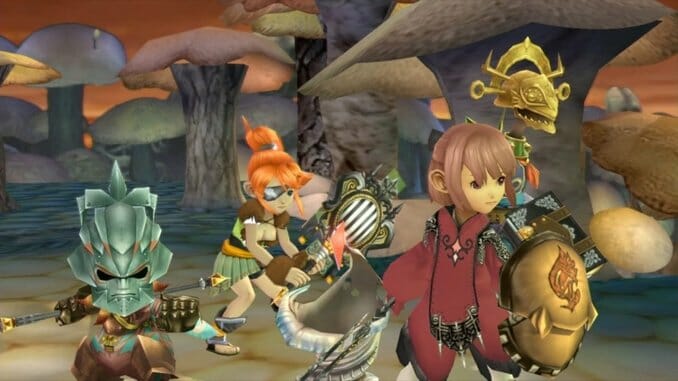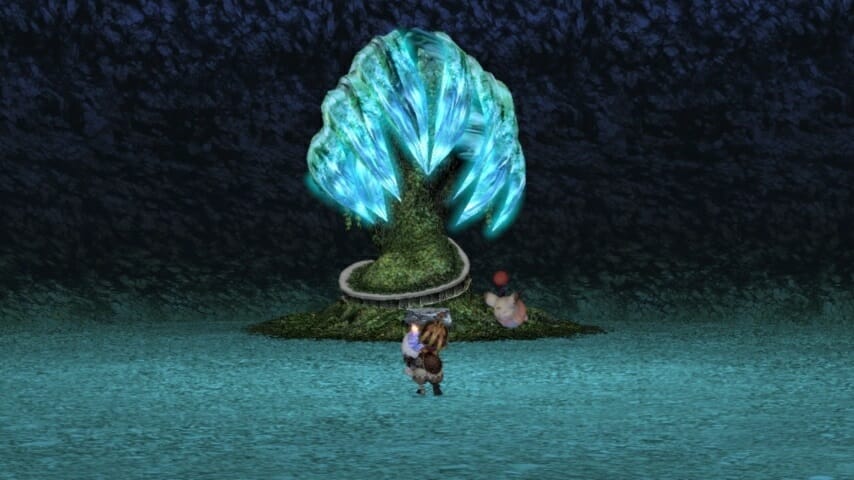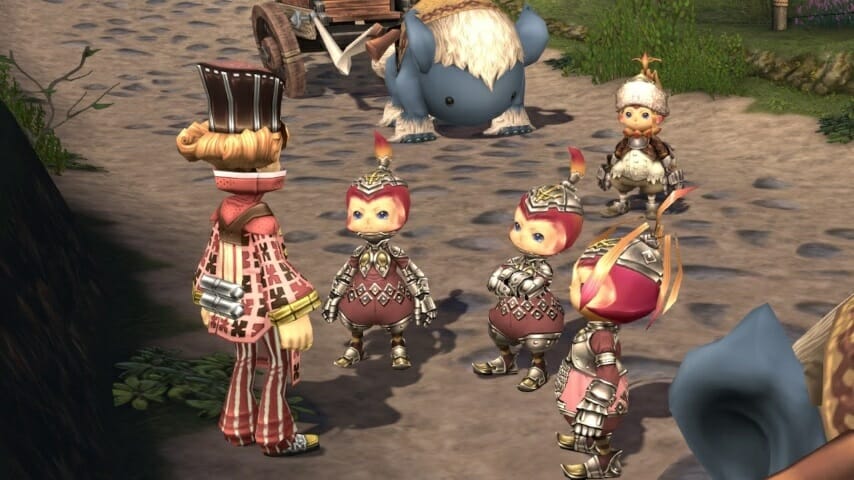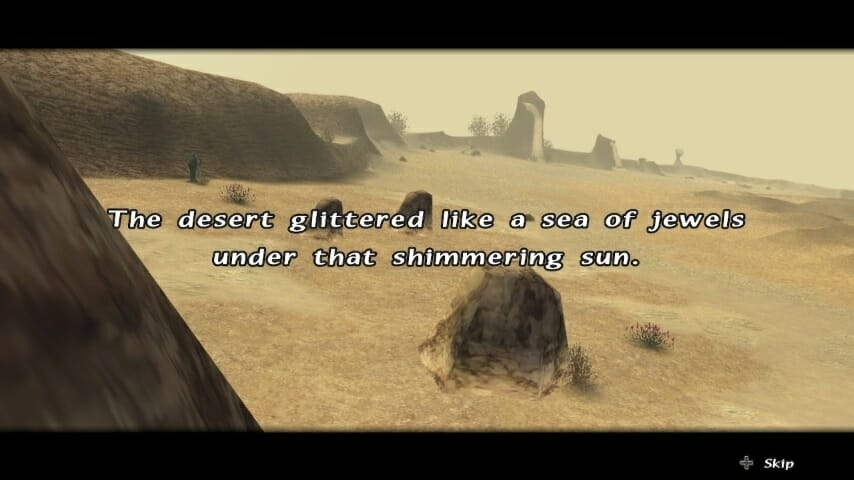Final Fantasy Crystal Chronicles: Remastered Edition Is an Enchanting Journey into Mystery
Games Reviews Final Fantasy
One of my biggest frustrations over the years with RPGs has been their inability to break from design cliches. The blockbuster RPGs of Elder Scrolls, Persona, The Witcher 3 and Square Enix’s own Final Fantasy itself have created a fence, built on the sterilization of their forebears, that has left other RPG developers to follow their design trends in wake of their success. For this we end up with politics that have been defanged for the sake of morality systems that are conservative or lacking nuance. We’re inundated with side quests as checkboxes to fill a map, with the occasional marginal subtext or traumatic fluff to seem meaningful. We get massive areas to explore, with a large part of our time playing just moving from one dot to the next.
I immediately found contrast to these standards from the start of Final Fantasy Crystal Chronicles: Remastered Edition. It plays like a tabletop RPG, with mechanics of time moving on and events triggering with the travelling of a map. It exists to let us journey into a mysterious world that can never actually be fully understood by the player, wrapping itself in a shroud of mystery with diary entries and poems narrating your travel. Its content isn’t meant to be exhausting.
Crystal Chronicles doesn’t try to loop the player into a meaningless grind with the goal of a power fantasy. It trusts that a journey is meaningful because it is never a journey of your own. The world is fine with you, and it would be fine without you.

In the grand scheme of the world, most of Crystal Chronicles is an anthology of the mundane. Not that it’s tedious and boring, but an argument for the beauty of being so small in a massive world of other small souls. Your caravan is never seen rushing to save anyone, or reaching for their final breath. You leave your village at the beginning of the year, travel to gather some myrrh that will maintain your village’s safety, and meet some other travelers along the way. The mundane is everyday, but everyday always holds meaning.
This mundanity is a consequence of the game’s world existing centuries after a traumatic event of a meteor falling from the sky and inciting the spread of a deadly miasma. Many lives were lost, and the communities seen are what remains after decades of rebuilding. These inhabitants cannot travel freely anymore, and the pathways that once connected them are now precarious. When there isn’t the occasional traveler on the road, or a town at the next stop, traversing through monsters and obstacles can be lonely.
As you create characters from the four races unique to the Crystal Chronicles series, all of them also generate families and occupations that exist outside of the journey. Over the course of travel these same family members will send your character letters, and give you gifts when you return home. After retrieving myrrh from a mushroom forest, my liltie Salmon received a letter from her sister telling her that mom and dad were arguing about who looks like a cow. Later I received a letter from my father that I was, in fact, the one who looked like a cow.
Journal entries and letters are a primary form of communication throughout the game. Every character met on the road leaves the traveler with words to add to their journal. Every area ventured into leads to a letter delivered.
These messages and notes are one of my favorite parts of the game because they put the focus on intimate moments of connection. The journey of the caravan isn’t perilous, but desperate for connection and intimacy. This is why so many strangers end up becoming welcome faces as the years go on. Knights with no memory and scheming scholars are all randomly encountered during travel. I found myself loving most of these travelers, but I found myself emotionally wrought from my time with a scientist.
Over the (in-game) years that went by in my time playing I would receive letters from a scientist I met in a small little town. He wanted to try and fix the miasma that continued to put communities in harm’s way. I was always excited to see a letter with his name, De Nam, after I had completed an area. Discouraged at first I would reply telling him that he should continue, in hopes of not letting his cynicism get the best of him. However, over time the letters I received started to become worried as he would recount experiences of drinking water containing miasma in order to see if he could form a resistance. I repeatedly sent replies for him to stop. Then the letters stopped coming.
Later I found his bandana, alone lying in the middle of a swamp. For all his ambitions to make the world a safer place, he will be known to no one except for me, his friend who he sent letters.

Dungeon crawling is the second half of the journey in Crystal Chronicles, as the way to retrieving myrrh involves cutting through monsters to reach the end of a level. However, the complexity of fighting is fairly shallow. It isn’t necessarily bad that it’s shallow. In fact, I found myself enjoying that it was a fairly simple form of combat. Browse through an action menu left and right, hit the action button for the action you want to do, maybe even dodge sometimes.
In many games this simplistic combat could easily be a bore, but it feels like it couldn’t be any other way for Crystal Chronicles. Each of the locations which come between meetings on the road are extremely expressive spaces. With every entry of a dungeon, a folk poem is narrated. Sometimes it is about the location, other times it is simply an expression passed through time. The design of all the spaces have touches of being lived in; interrupted at an extinguished fire, millhouses that were destroyed long ago. On top of this, the Celtic inspired music always finds a different emotion that fittingly touches you with each space.
Honestly I find it disappointing that I have to even fight through these spaces at all, because I would much rather just walk through them. The game already excels with its reliance on intimate, mundane stories. So it’s disappointing that I still have to return to something trite as combat sequences. This conflict between moody mundanes and looty dungeons is emphasized more so within this remake.

I never got to play the original Crystal Chronicles; it wasn’t easily accessible to me when it was released as I bought many games from the bargain bin or usually had to trade what I had for other titles. From what I remember, the game was solely advertised as a multiplayer experience that required specific hardware from Nintendo. The only thing I ever knew about the game was from stories told by my friends about adventuring and killing monsters together.
As the producer and devs have stated in an interview, the original Crystal Chronicles was created to compliment the Gamecube’s connecting cable to the Gameboy. It was a design based on the need to promote game hardware, and to create value in a product in order for it to become a viable part of the market. Initially the game was designed to be a tabletop-like experience where players could have different information distributed to their specific linked devices. This was something that would have been unique to multiplayer gaming at the time, and unique to console RPGs as well. However, the design moved over time and slowly shaped itself to look more like other popular RPGs released at the time, Phantasy Star Online being one cited in the aforementioned interview.
17 years later, the game now has a much lower barrier to entry with cross platform play between IOS, Android, Switch, and PlayStation 4. Yet, with the removal of the arbitrary hardware barriers to entry comes a new problem. Crystal Chronicles Remastered has fundamentally changed the way multiplayer worked from the original game. Where originally players travelled together, watched the story together, and fought together, this new remake of the game only allows players to fight together.
Alongside this, many times the time progression which is the foundation for much of the game’s narrative mechanics and tone can be almost entirely avoided. For instance, dungeons are just loops for characters to gain talismans that will improve their characters’ stats.
With each member of the caravan having their own separate stats, items, and families in the world, the gameplay loop of multiplayer ends up feeling a lot like a Diablo-lite. However, because the game is so hardly focused on fighting, I rarely found myself caring about builds, gear, or complex mechanics. I found this most disappointing, because I ended up having no interest in multiplayer at all—one of the highlights of what made the original game so special.
I’m disappointed by this choice of design with the remastered version. However, I do not see this change as a failure of this remake. Rather, the values of corporate design become apparent when comparing the two. The refreshing nature of Crystal Chronicles came from a time of different practices of game development. One could say it was the last era before many contemporary norms became universalized. However, it was also a product created with some form of an agreement to benefit the viability of Nintendo’s new peripheral on the market. Looking at the old game in this way, it’s easy to see why we received the remake to the game in 2020.

As game corporations continue to find ways to exploit their players without explicitly asking for cash, access to multiplayer gaming has become easier than ever. Gil multipliers can be purchased if your character isn’t making enough money. A lite version can be downloaded under the guise of being free. With the most popular online multiplayer games being on almost every platform, it is easy to imagine how Crystal Chronicles fit the bill in a pitch meeting. It’s just disappointing that even when something beautiful comes from these companies, there is always something ugly lying within.
Despite Remastered’s losses, I still found a game that I quickly came to love. During my time playing, I created a character that was only for solo, and another only for multiplayer. However, most of the time I found myself enjoying travelling alone on a wagon, adventuring into each location with only my emotions to keep me company.
In these moments I found time for introspection. Time to reflect on the events which happened prior to combat, but also just to feel the emotions of each space wash over me. A somber mine, only remembered by the mothers of our mothers. The burning rage that creeps from the embers of the oceanic volcano. Each of these spaces left me emotionally entranced and affected. That isn’t something games evoke in a visceral manner for me anymore and I am not sure it’s something I will experience again in the near future.
Final Fantasy: Crystal Chronicles Remastered was developed and published by Square Enix. Our review is based on the Switch version. It is also available for the PlayStation 4, iOS and Android.
Waverly is a trans game artist and freelance writer. She has written at Uppercut, Into The Spine, and Fanbyte. You can find her on Twitter @hotelbones.